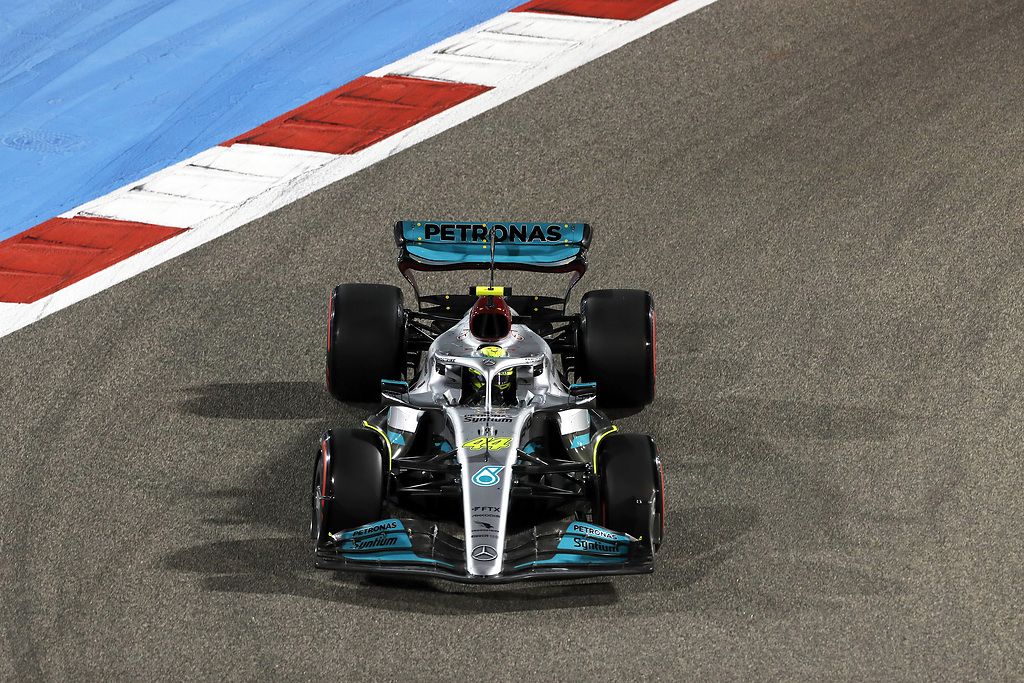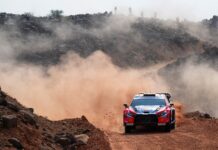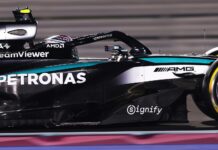Mercedes Team Principal Toto Wolff is reluctant to make a judgement on where his team truly lies in Formula 1’s shaken-up pecking order, but admits he is viewing the Bahrain GP as a test after witnessing seven-time champion Lewis Hamilton take Mercedes’ 265th podium finish.
The alarming nature of Bahrain’s speed trap figures which planted the Mercedes powered cars firmly at the bottom of the order, many have begun to question whether Mercedes power units have been the most badly affected by the introduction of E10 fuel.
Since a deficit for the works Mercedes team to the outright head of the field became completely clear in pre-season testing, Mercedes and Wolff have been adamant that they were indeed showing their true pace and not ‘sandbagging’ as they have been previously accused of.
Qualifying on Saturday for the Bahrain GP was the first time everyone would be forced to show their hand after six total days of pre-season running and three practice sessions to get on top of the new-for-2022 F1 cars. Mercedes claimed a disappointing P5 and P9 on the grid for Hamilton and newly-signed George Russell respectively as rivals Ferrari and Red Bull secured the first four positions.
Hamilton’s former team mate Valtteri Bottas, Haas’s last minute re-recruit Kevin Magnussen and the Alpine in the hands of Fernando Alonso lined-up in between the Mercedes pairing. The other Mercedes-powered cars were all knocked out collectively in Q1 and Q2, taking positions 13-14-17-18-19-20.
In the race Hamilton and Russell couldn’t make a sustained challenge to the Ferraris or Red Bulls, but benefitted from the late race retirements of the latter team. Wolff points to a seemingly huge step made by Ferrari in the power unit department since their nadir of 2020 and subsequent slender improvement in 2021 as the factor which led to Charles Leclerc’s dominance of the majority of the race.
He does imply however that the obvious straight line speed disadvantage of the Mercedes powered cars in Bahrain was not only down to the power units. “I think we need to analyse the drag levels first before we really make a judgement of whether we are lacking power,” said Wolff to written media.
“I don’t think there is a big difference between the power units but clearly Ferrari made a big step forward, because last year they weren’t totally competitive and if you look in Bahrain it looks as if they outperformed everyone else.”
The power units for 2022 – in line with the engine freeze until 2026 – have been given a makeover to accommodate a new E10 fuel whereby 10% of the fuel is now made up of the less-energy-dense ethanol. Wolff was asked about the impact of the new fuel on how their power units operate, and how much effort was required to adapt to it.
“It’s very simple because every fuel supplier had to add 10% Ethanol,” said Wolff. “Ethanol is one formula, there is nothing you can change. And then it’s the normal development steps on the 90% remaining fuel; how much performance can you actually add from one year to the other in the conventional part of the fuel.
“Some will have done a good job, some a neutral one, some less good,” summed up Wolff. Faced with the potential prospect of entering the current engine freeze era on the backfoot, Wolff points to the need to claw back the advantage lost by focusing on understanding how to make the most of the package – likely to have to come from other areas such as rethinking drag-inducing aerodynamic concepts.
“When I look at the season, with stable regs until 2026, it is how well you learn — that’s why for me I would qualify the race as a test,” said Wolff. “And there is more understanding where the gaps lie, and it is pretty much in every area. Now we need to regain land centimetre by centimetre.
“I think more than really bringing parts is an understanding of how we can unleash the performance that we believe to be in the car — or that we hope to be in the car, that’s a better word — before throwing bits at in terms of performance. This is where I would see it,” summed up Wolff.
It is similarly unclear where Mercedes’ customer teams lie in the true order too, but the Bahrain GP evidently wasn’t an encouraging race for them. McLaren’s disastrous season opener was spent struggling with the aftermath of brake cooling issues, and Aston Martin and Williams seemed to also lie in the second half of the midfield pack throughout the weekend.
The story was written by Danny Herbert
Here’s what was ailing McLaren
Here’s Lewis Hamilton, Toto Wolff on Bahrain results



















